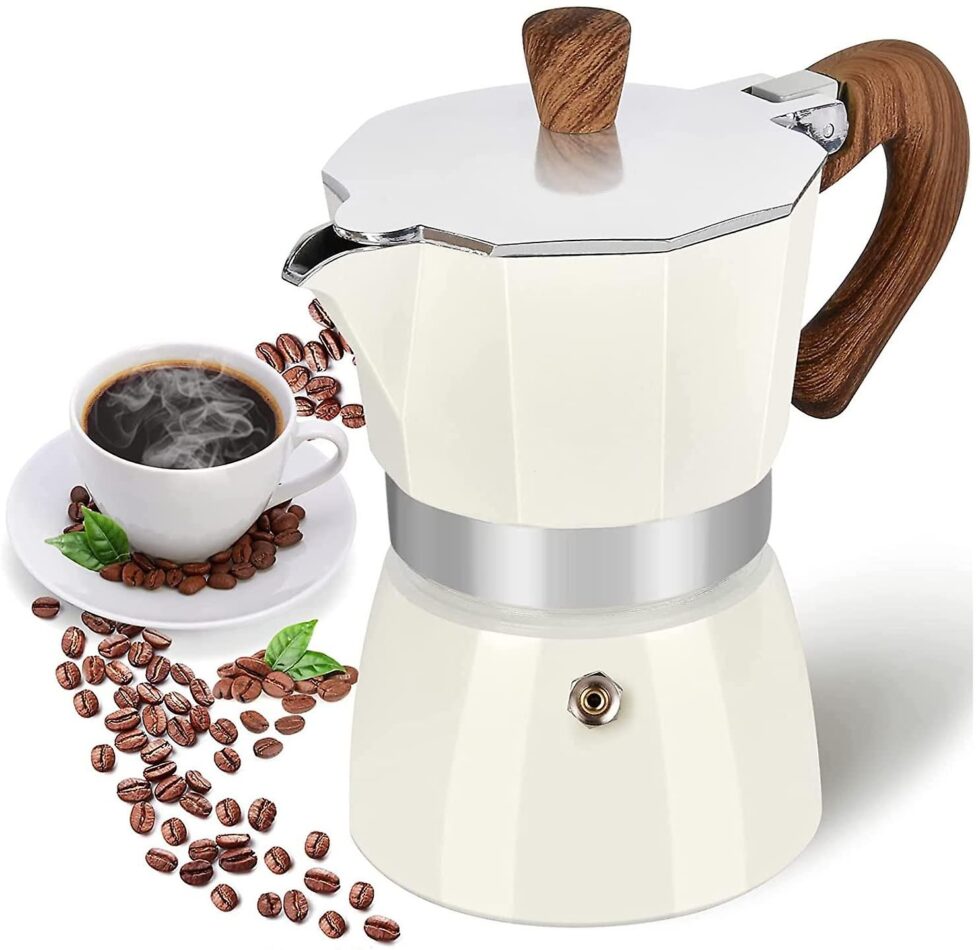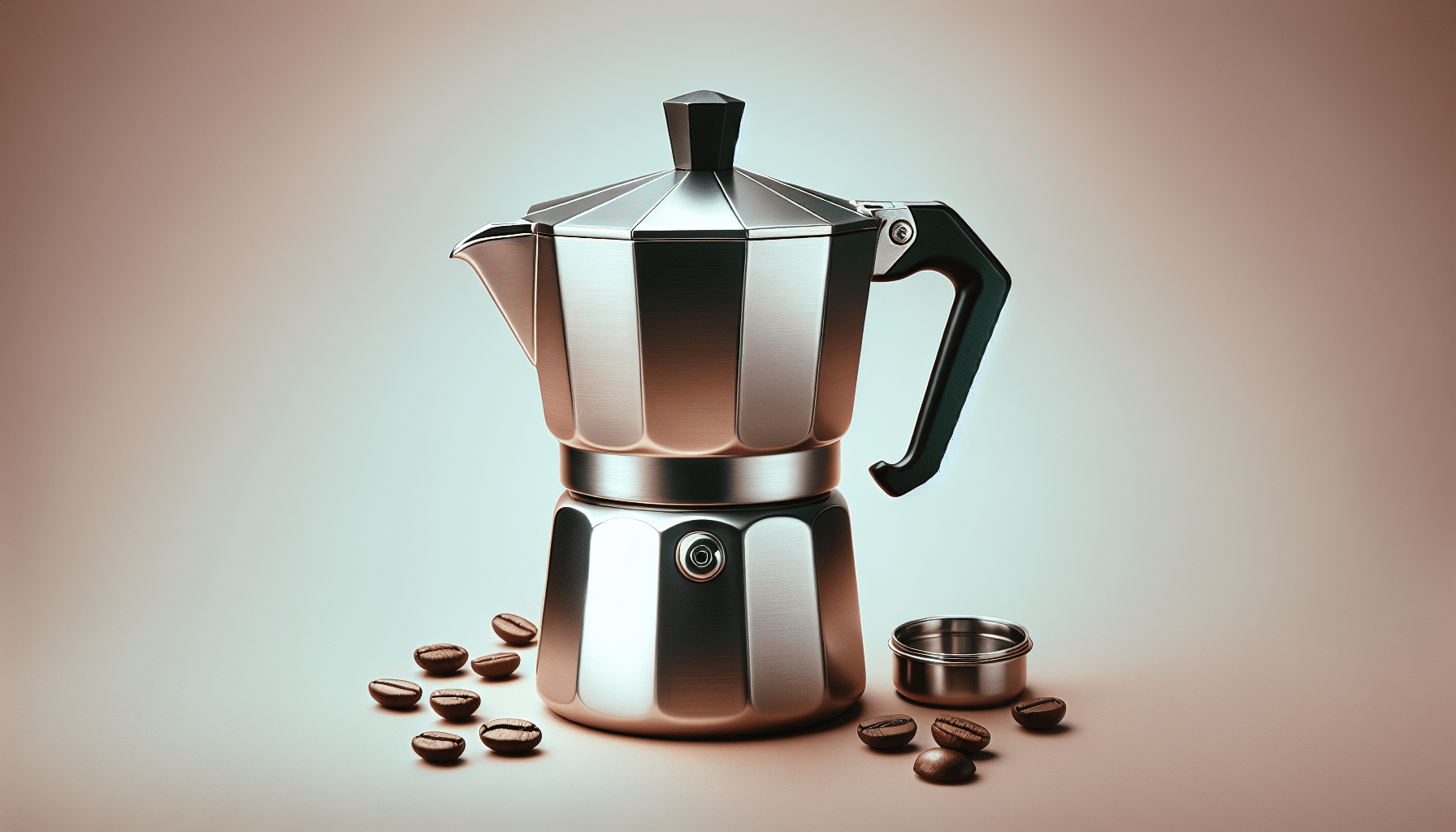Do you enjoy the bold and robust flavors of Greek coffee, but aren’t sure how to make it at home? Well, you’re in luck! Many coffee enthusiasts wonder if a stovetop espresso maker can be used to brew this traditional Greek favorite. In this article, we will explore whether or not you can use a stovetop espresso maker to make Greek coffee. So get ready to indulge in the rich culture and tantalizing aromas of this beloved brew!
What is Greek coffee?
Greek coffee is a traditional and popular style of coffee that originates from Greece. It is known for its strong flavor and distinctive preparation method. Greek coffee is typically made using a fine grind of coffee beans and is brewed in a small pot called a briki. It is often enjoyed in small cups and is a common part of Greek culture and social gatherings.
Traditional Greek coffee
Traditional Greek coffee is made using a specific method that has been passed down through generations. It involves using a briki, a small pot with a long handle, to heat water, sugar, and finely ground coffee together. The mixture is usually brought to a boil and then removed from the heat, allowing the coffee grounds to settle at the bottom of the pot. Greek coffee is traditionally served without any milk or cream, and it has a rich, robust flavor.
Preparation method
The preparation method for Greek coffee requires careful attention to detail. Firstly, the coffee beans need to be ground to a very fine consistency, similar to that used for espresso. This fine grind allows for optimal extraction of flavors during the brewing process. Next, the water is heated in the briki, and sugar is added to taste. Once the sugar has dissolved, the coffee grounds are added to the pot. The mixture is then brought to a boil while being constantly stirred. Finally, the pot is removed from the heat, and the coffee is allowed to settle before being poured into small cups for serving.
Distinctive features
Greek coffee is known for its unique characteristics. It has a thick and syrupy consistency, owing to the fine grind of the coffee beans and the prolonged boiling process. The coffee grounds settle at the bottom of the cup, creating a layer of sediment that is not consumed. Greek coffee is usually strong and intense, offering a rich and flavorful taste. It is often served alongside a glass of water to cleanse the palate between sips.
What is a stovetop espresso maker?
A stovetop espresso maker, also known as a Moka pot, is a popular device used to brew coffee on the stovetop. It consists of a bottom chamber, a filter basket, and an upper chamber. The bottom chamber is filled with water, and the filter basket is filled with coffee grounds. As the water heats up, pressure is created, forcing the water through the coffee grounds and up into the upper chamber, where the brewed coffee collects.
Overview of stovetop espresso maker
Stovetop espresso makers are designed to produce a concentrated form of coffee that resembles espresso, albeit with a slightly different taste and texture. They are often made from aluminum or stainless steel and come in different sizes to accommodate varying brewing capacities. Stovetop espresso makers are widely used in households worldwide and are valued for their simplicity, durability, and affordability.

Working principle
The working principle of a stovetop espresso maker is based on the concept of pressure. As the water in the bottom chamber heats up, steam is generated and builds pressure. This pressure forces the hot water through the coffee grounds in the filter basket, which extracts the flavor compounds from the grounds. The brewed coffee then rises through a tube and collects in the upper chamber. The process is similar to that of an espresso machine, but with lower pressure and a longer extraction time.
Benefits of using a stovetop espresso maker
Using a stovetop espresso maker offers several benefits. Firstly, it is a cost-effective alternative to expensive espresso machines, making it a popular choice for home coffee brewing. Stovetop espresso makers are also compact and portable, making them ideal for travelers or those with limited kitchen space. Additionally, the simplicity of the brewing process makes it accessible to coffee enthusiasts of all skill levels. The resulting coffee from a stovetop espresso maker is flavorful and can be used as a base for various coffee-based drinks.
Can a stovetop espresso maker be used to make Greek coffee?
Yes, a stovetop espresso maker can be used to make Greek coffee. While there are some differences between Greek coffee and espresso, the similarities in brewing methods and the ability to create strong and concentrated coffee make stovetop espresso makers a suitable tool for brewing Greek coffee.

Similarities between Greek coffee and espresso
Greek coffee and espresso share some common characteristics. Both are brewed using a fine grind of coffee beans, resulting in a concentrated and flavorful drink. The brewing process for both involves the use of hot water and pressure to extract the flavors from the coffee grounds. The use of a stovetop espresso maker allows for the creation of a strong and robust coffee, similar to the intensity of traditional Greek coffee.
Differences between Greek coffee and espresso
Although Greek coffee and espresso share similarities, there are also notable differences. The grind size for Greek coffee is typically finer than that used for espresso, allowing for a more concentrated extraction. Greek coffee is also traditionally prepared with sugar and without any milk or cream, while espresso can be enjoyed in various forms, such as cappuccinos and lattes. The brewing time and temperature also differ, with Greek coffee generally requiring a longer boiling process compared to espresso.
Methods for using a stovetop espresso maker to make Greek coffee
There are two main methods for using a stovetop espresso maker to make Greek coffee. The first method closely follows the traditional Greek coffee preparation, while the second method includes modifications to the process to adapt to the stovetop espresso maker.

Method 1: Traditional method
To make Greek coffee using a stovetop espresso maker using the traditional method, follow these steps:
- Grind coffee beans to a fine consistency, similar to espresso grind.
- Fill the bottom chamber of the stovetop espresso maker with water. Do not exceed the maximum fill line.
- Place the filter basket in the bottom chamber and fill it with the ground coffee.
- Screw the upper chamber onto the bottom chamber, ensuring a tight seal.
- Place the stovetop espresso maker on the stove over medium heat.
- Allow the water to heat and create pressure, forcing it through the coffee grounds.
- Once the coffee starts collecting in the upper chamber, remove the stovetop espresso maker from the heat.
- Let the coffee settle for a few minutes to allow the grounds to sink to the bottom.
- Pour the coffee into small cups, leaving the sediment at the bottom of the stovetop espresso maker.
Modifications to the traditional method
While the traditional method can be used with a stovetop espresso maker, some modifications can be made to adapt to the equipment:
- Adjust the water-to-coffee ratio based on personal preference. Experiment with different ratios to achieve the desired strength.
- Extend the extraction time by letting the coffee sit on the heat for a slightly longer period.
- Stir the mixture gently after removing the stovetop espresso maker from the heat to encourage settling.
Method 2: Modified method
For a modified method of making Greek coffee using a stovetop espresso maker, follow these steps:
- Grind coffee beans slightly coarser than for espresso.
- Fill the bottom chamber of the stovetop espresso maker with water, ensuring not to fill it above the maximum fill line.
- Place the filter basket in the bottom chamber and add the ground coffee.
- Screw the upper chamber onto the bottom chamber securely.
- Place the stovetop espresso maker on the stove over medium-low heat.
- Allow the water to heat gradually, avoiding high temperatures that may scorch the coffee.
- Once the coffee starts collecting in the upper chamber, remove the stovetop espresso maker from the heat.
- Let the coffee settle for a few minutes before pouring it into small cups, leaving the sediment behind.

Adjustments to time and grind size
In the modified method, the brewing time needs to be extended to allow for a longer extraction due to the coarser grind. The exact time will depend on personal preference and the stovetop espresso maker used. Similarly, the grind size can be adjusted to achieve the desired strength and flavor. Experimentation may be necessary to find the ideal balance of time and grind size.
Alternative brewing techniques
While the traditional and modified methods mentioned above are the most common ways to make Greek coffee using a stovetop espresso maker, there are alternative brewing techniques worth exploring. Some coffee enthusiasts have successfully experimented with preheating the water, adjusting the heat during the brewing process, or stirring the coffee grounds in the filter basket. These techniques can yield slightly different flavors and textures, allowing for further customization and personalization of the Greek coffee experience.
Tips for making the perfect Greek coffee with a stovetop espresso maker
To achieve the perfect Greek coffee using a stovetop espresso maker, consider the following tips:
Selecting the right coffee beans
Choose high-quality coffee beans that are suitable for making Greek coffee. Opt for beans with a dark roast profile and a rich, bold flavor. Arabica or Robusta beans can be used, depending on personal taste preferences.
Choosing the appropriate grind size
Experiment with different grind sizes to find the right one for Greek coffee made with a stovetop espresso maker. Finer grinds will result in a stronger and more concentrated flavor, while coarser grinds may produce a lighter-bodied coffee.
Water-to-coffee ratio
The water-to-coffee ratio can significantly impact the strength and taste of Greek coffee. Start with a ratio of 1 tablespoon of coffee for every 6 ounces of water and adjust from there based on personal preference.
Adjusting the heat
Finding the right heat level is crucial for brewing Greek coffee with a stovetop espresso maker. Medium to medium-low heat is generally recommended to avoid scorching the coffee grounds and to allow for a slower extraction.
Stirring and boiling process
During the brewing process, gently stir the coffee grounds in the filter basket to promote a more even extraction. Avoid vigorous stirring, as this can cause the coffee grounds to rise and escape into the upper chamber.
Serving suggestions
Greek coffee is traditionally served in small cups alongside a glass of water. The coffee can be enjoyed as is or paired with a sweet treat such as a Greek pastry or a piece of baklava. The flavorful and robust nature of Greek coffee makes it a delightful after-dinner drink or a morning pick-me-up.
Common mistakes to avoid
When using a stovetop espresso maker to make Greek coffee, it’s important to avoid common mistakes that can impact the taste and quality of the final beverage.
Using the wrong coffee beans
Using coffee beans that are not suitable for Greek coffee can result in a less than ideal flavor. It is important to select beans with the right roast profile and flavor characteristics to ensure a rich and authentic Greek coffee experience.
Using the wrong grind size
The grind size can greatly affect the extraction process and the strength of Greek coffee. Using a grind size that is too coarse or too fine can result in a weak or overly bitter coffee. Experimentation is key to finding the perfect grind size for personal taste preferences.
Incorrect water-to-coffee ratio
Using the wrong water-to-coffee ratio can lead to a coffee that is either too weak or too strong. It is recommended to start with a balanced ratio and adjust it based on personal preference.
Overheating or underheating
Controlling the heat during the brewing process is crucial to avoid overheating or underheating the coffee. Overheating can lead to a burnt taste, while underheating can result in a weak and under-extracted coffee. Finding the right heat level and monitoring it closely is essential.
Skipping the stirring process
Skipping the process of gently stirring the coffee grounds in the filter basket can result in an uneven extraction. Stirring helps to ensure that all the coffee grounds come into contact with the water, maximizing flavor extraction.
Alternative methods for making Greek coffee
While using a stovetop espresso maker is one way to make Greek coffee, there are other methods available for those who prefer different brewing techniques.
Using a briki
A briki is a traditional Greek coffee pot specifically designed for making Greek coffee. It allows for precise control over the brewing process, including the ability to measure water, add coffee, and stir the mixture effectively.
Using a French press
Though not the traditional method, some coffee enthusiasts have successfully brewed Greek coffee using a French press. The French press allows for a more straightforward brewing process and easy separation of the coffee grounds from the brewed coffee.
Using a traditional Greek coffee pot
For those who want to stay true to tradition, using a traditional Greek coffee pot, known as a briki, is the recommended method. This pot is designed to handle the high heat and boiling process required for Greek coffee, ensuring a proper extraction and the characteristic thick consistency.
Conclusion
In conclusion, a stovetop espresso maker can indeed be used to make Greek coffee. While there are some differences between Greek coffee and espresso, the similarities in brewing methods and the ability to create strong and concentrated coffee make stovetop espresso makers a suitable tool for brewing Greek coffee. By following the traditional or modified methods mentioned above, individuals can enjoy the rich and robust flavors of Greek coffee using their stovetop espresso maker.
Benefits and limitations of using a stovetop espresso maker
The benefits of using a stovetop espresso maker to make Greek coffee include affordability, simplicity, and portability. Stovetop espresso makers are cost-effective alternatives to expensive espresso machines and are accessible to coffee enthusiasts of all skill levels. They can be easily moved and used in different locations, making them versatile for home or travel use. However, it is important to note that while a stovetop espresso maker can produce coffee similar to Greek coffee, it may not provide the exact traditional experience of using a briki or Greek coffee pot.
Adaptability of the stovetop espresso maker for making Greek coffee
The adaptability of stovetop espresso makers for making Greek coffee is evident in the methods and techniques that can be applied. By modifying the brewing process and experimenting with grind size, water-to-coffee ratios, and brewing times, individuals can tailor their Greek coffee experience to their preferences while using a stovetop espresso maker.
Experimenting with different methods and techniques
Greek coffee enthusiasts can explore various brewing methods and techniques to find the approach that suits their taste preferences. Whether using a stovetop espresso maker, a briki, a French press, or a traditional Greek coffee pot, experimenting with grind sizes, brewing times, and water-to-coffee ratios can lead to new and exciting flavors. The journey of discovery and experimentation is part of the joy of brewing Greek coffee and will allow individuals to develop their own unique approach to this beloved beverage.
Additional resources
For those interested in exploring Greek coffee further, there are various resources available. Online Greek coffee recipes can provide detailed instructions and tips for making Greek coffee at home. Additionally, investing in essential equipment such as a briki or a traditional Greek coffee pot can enhance the Greek coffee experience and provide a more authentic touch.




